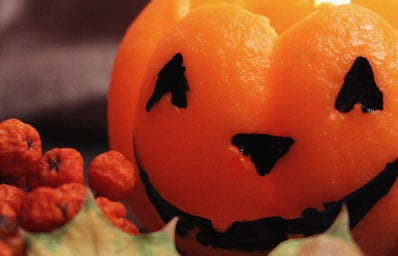It’s Spooky Season again!!!! This is my absolute favorite time of year!!!! This year I am studying abroad in Colombia and I thought it would be fun to break down the differences between how people from the United States celebrate the holiday versus Colombia.
Halloween in the United States is a festive and widely celebrated holiday, known for its unique traditions. A central tradition is trick-or-treating, where children, and sometimes adults, dress up in costumes and visit homes, asking for candy and treats. Whereas, in Colombia, Halloween is celebrated alongside “Dia de las Brujas” (Witches’ Day), blending traditional Halloween elements with Colombian customs.Trick-or-treating is becoming increasingly common, particularly in urban areas, but it’s not as widespread as in the United States. American households embrace the Halloween spirit with elaborate decorations, often featuring carved pumpkins (jack-o’-lanterns), fake cobwebs, skeletons, and other spooky items originally stemming from religious pagan practices that have since been commercialized and changed to fit the current capitalist society. They also host costume parties where dressing up is taken very seriously; many people invest significant time and effort into creating elaborate and creative costumes. Haunted houses and spooky attractions are also popular, offering thrilling experiences for those seeking a good scare. In contrast, Colombian Halloween celebrations often bear the influence of the country’s strong Catholic traditions. They choose to focus on the passing of their loved ones and there is far less commercialization when it comes to parties, parades, and events. In some regions, people may also celebrate the “Day of the Dead” (Dia de los Muertos), which is a distinct holiday from Halloween (it is also celebrated in the United States) that originated in Mexico. Traditional foods and treats are an essential part of Colombian Halloween celebrations, including “candied figs” and “panela con queso” (panela is steeped pure sugarcane in boiling water, a bit like tea–and queso means ‘cheese’ in Spanish typically it is peasant cheese that is added to drinks, which is a white, creamy, mild to semi-soft cheese made from goats’ milk). This drink is often served with almojábanas. I’ve included a recipe from vecinavegetariana.com if you choose to make this delicious Colombian Halloween treat.
Almojábanas Recipe
INGREDIENTS
- 250 grams peasant cheese or curd, finely grated see notes for replacement
- 60 grams precooked white corn flour corn flour for arepas, see notes
- 20 grams cornstarch (about 2 tablespoons)
- 1 tablespoons white sugar
- 1 teaspoon baking powder
- salt
- 1 egg, beaten
- 4-6 tablespoons milk (as needed)
PREPARATION
- Preheat oven to 220 degrees Celsius (440 Fahrenheit)
- Cover the baking sheet with baking paper
- Add cornmeal, cornstarch, sugar, baking powder and salt to a large bowl and mix
- Add the grated cheese and beaten egg, mix with a fork. Then knead with your hands until the cheese is well incorporated into the dough
- Add milk per spoon if needed. This depends on how wet the cheese is. You want a light and soft dough, which is not sticky, but also does not crumble
- Divide the dough into 10-12 equal pieces and shape them into balls. They will be slightly bigger than golf balls. Place them on the tray and bake for about 20 minutes, or until golden brown.
- Serves hot
NOTES
- You can replace peasant cheese with ricotta or grated mozzarella and they will be delicious although the taste will be different from traditional almojábanas.
- For this recipe you need the same type of corn flour that is used for arepas. It is a precooked white cornmeal, although cornmeal made from yellow corn also works.
- They taste better fresh. Even after 1 hour, they tend to dry out and crumble, so it’s best to eat them all right away. If you have leftovers, heating them in the oven helps a little. Or make my Almojábana Cake recipe.


